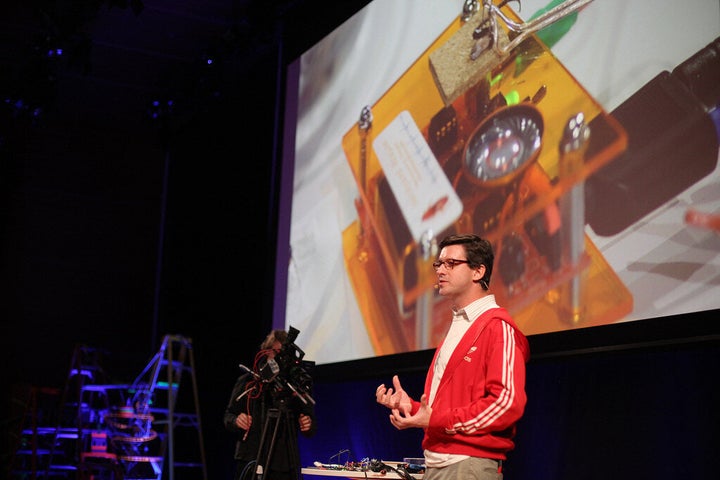
Neuroscience is still in the "dark ages" in terms of understanding the brain, according to Gregory John Gage.
He told HuffPost at this year's TED conference that any great thinker can be a great neuroscientist, but the field has far too few people working in it. But this doesn't have to be the case.
His goal is simple: Since many young people decide what to study and which career to pursue based on experiences when they are young, he hopes to inspire them to study the brain through experiments they can do at home at an early age.
Along with co-founder Tim Marzullo, Gage is one of the founders of Backyard Brains, a company that teaches middle-schoolers about neuroscience, and also sells do-it-yourself kits that allow them to conduct their own experiments.
This year, Gage was honored as one of 40 TED Fellows, and sat down with HuffPost to discuss some of his experiments and talk about Backyard Brains. The TED conference is an international gathering of thinkers, scientists and designers.
Asked about his initial inspiration, Gage said, "Scientific equipment in general is pretty expensive, but it's silly because before that I was an electrical engineer and you could see that you could make them yourself… So we started as a way to have fun, to show off to our colleagues, but we were also going into classrooms around that time and we thought, wouldn't it be cool if you could bring these gadgets with us so the stuff we were doing in advanced Ph.D. programs in neuroscience, you could also do in fifth grade?"
The first product they launched was a spiker box, which according to Gage, allows kids to record information from the brain like scientists in labs. The difference is, with a spiker box the recordings can come from insects, whereas in the lab they are using rats and monkeys.
Gage demonstrated two experiments. First, listening to neurons firing from a cockroach leg. Second, using music to stimulate the muscles to make the roach leg dance to music. Both are explained in the Backyard Brains video below.
The grand finale, however, was the true cyborg: the "Robo Roach," which is a kit that allows students to send signals into a cockroach’s nervous system.
So what do you think? Will these types of experiments get children interested in neuroscience and lead to future cures for Alzheimer’s and other brain diseases? Or will it just lead to a lot of little Frankensteins?
Photo via TED Conference Flickr
Check out other awesome TED Talks in our slideshow below:
